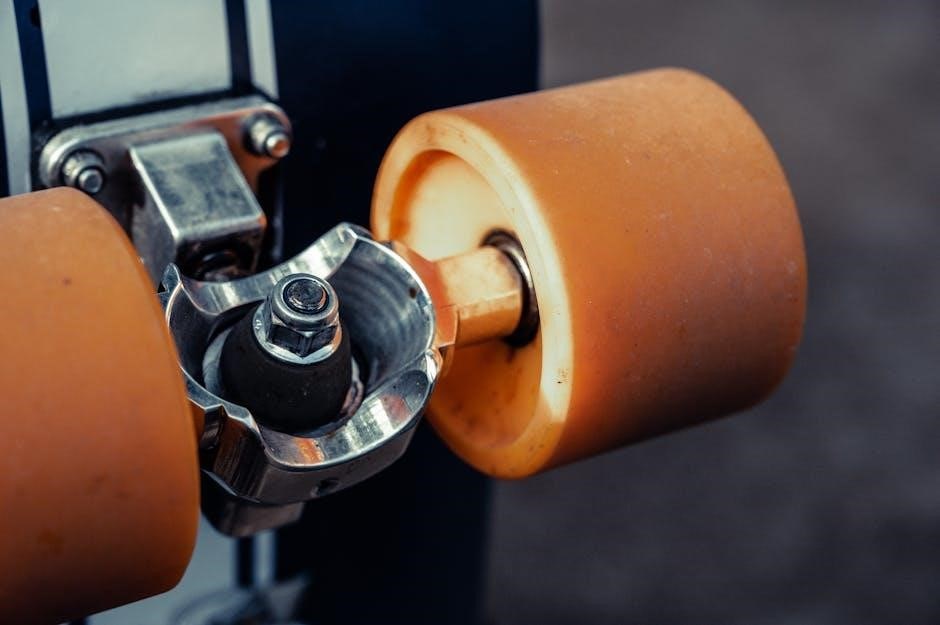Skateboard trucks are a fundamental component of your setup, connecting your deck to the wheels and enabling balance, turning, and overall control․ Understanding their role and importance is essential for every skater, whether you’re a beginner or an experienced rider․
1․1 What Are Skateboard Trucks?
Skateboard trucks are metal components that connect the deck to the wheels, enabling movement and control․ They consist of a hanger (the T-shaped part), an axle (which holds the wheels), a baseplate (mounted to the deck), and kingpin and bushings (for adjusting tightness)․ Trucks are crucial for turning, balancing, and performing tricks․ Their design and size directly impact the skateboard’s performance, making them a vital part of the setup․
1․2 Why Are Trucks Important for Skateboarding?
Trucks are crucial for stability, maneuverability, and overall performance․ They enable smooth turning, balancing, and control, making them essential for both casual cruising and advanced tricks․ Properly fitted trucks ensure optimal balance, while mismatched sizes can lead to poor handling․ Adjusting truck tightness allows skaters to customize their ride, from loose for easier turns to tight for stability․ Well-maintained trucks enhance safety and durability, ensuring a smooth and enjoyable skateboarding experience for riders of all skill levels․

Choosing the Right Truck Size
Truck size significantly impacts stability and performance․ Wider trucks offer more stability, while narrower ones enhance maneuverability․ Matching truck width to your deck ensures optimal balance and control․
2․1 How to Measure Skateboard Trucks
Measuring skateboard trucks involves checking the axle width and hanger length․ The axle width determines the truck’s compatibility with your deck, while the hanger length affects turning radius and stability․ Use a ruler or caliper to measure from tip to tip of the hanger for accuracy․ Proper sizing ensures your trucks align perfectly with your deck, providing optimal performance and responsiveness for your skating style․
2․2 Matching Truck Width to Your Deck
Matching truck width to your deck is crucial for stability and control․ Trucks that are too narrow may cause instability, while overly wide trucks can hinder turning․ Measure your deck’s width and choose trucks that align closely with it․ Proper sizing ensures even weight distribution and optimal performance, allowing for smoother turns and better responsiveness․ This alignment is key to enhancing your skating experience and ensuring your setup feels balanced and maneuverable․
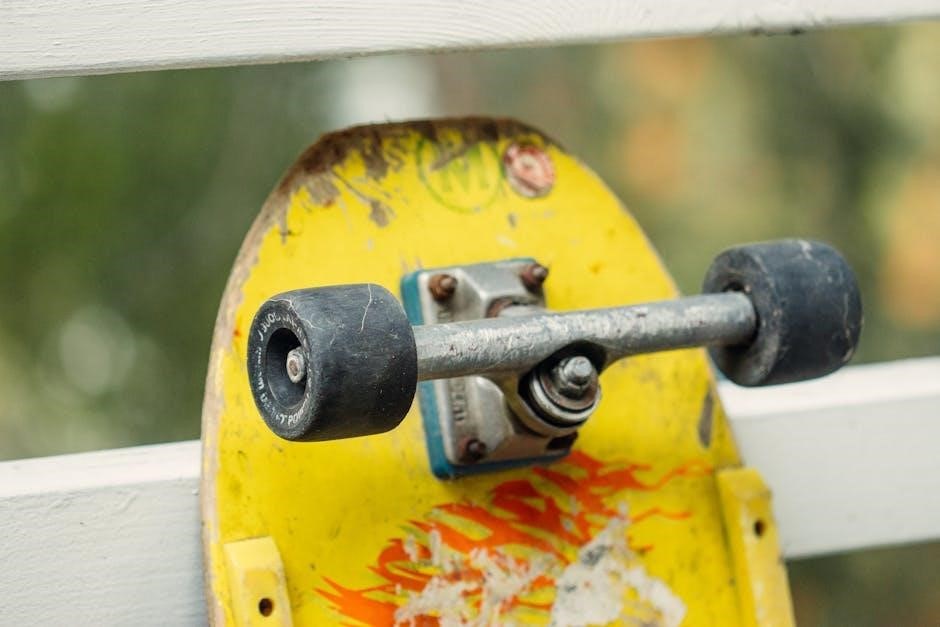
Key Components of Skateboard Trucks
Skateboard trucks consist of the hanger, axle, baseplate, kingpin, and bushings․ These components work together to provide stability, turning capabilities, and overall control, ensuring a smooth and responsive ride․
3․1 Hanger and Axle
The hanger is the T-shaped component of the truck, while the axle runs through it, connecting the wheels․ Together, they enable turning and balance․ The hanger’s length and axle’s width determine stability and maneuverability․ Durable materials like aluminum or steel ensure longevity․ Proper alignment and tightness are crucial for performance․ The hanger and axle are vital for responsive control, making them essential for any skating style․
3․2 Baseplate and Mounting Hardware
The baseplate is attached to the skateboard deck using mounting hardware, typically bolts and nuts․ It secures the trucks in place, ensuring stability․ The baseplate’s design, including the kingpin hole, affects turning responsiveness․ Properly tightened hardware ensures a secure fit, preventing movement during tricks or cruising․ Durable materials ensure longevity, while precise alignment maintains optimal performance․
3․3 Kingpin and Bushings
The kingpin is the large bolt that holds the truck’s components together, while bushings are rubber pads that fit around it, influencing turning and stability․ Softer bushings offer smoother turns, while harder ones provide more responsiveness․ Regularly tightening the kingpin ensures proper alignment and performance․ Replacing worn bushings can significantly improve the truck’s functionality and ride quality․ Both components are crucial for customizing the truck’s feel to suit individual skating styles and preferences․

Popular Skateboard Truck Brands
Independent, Royal, and Venture are leading skateboard truck brands․ Independent is favored for durability and reliability, Royal for smooth turning, and Venture for versatility and strength․
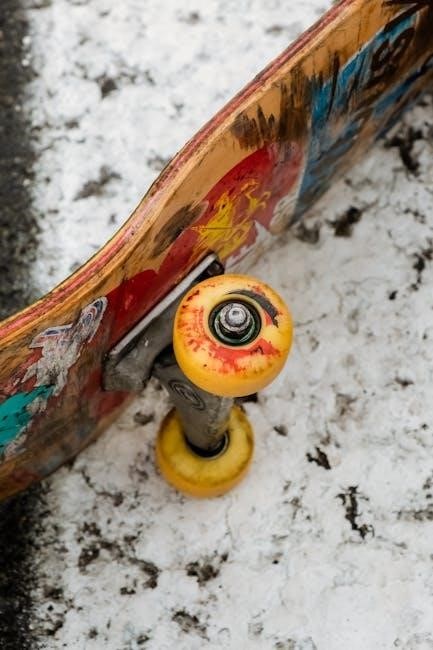
4․1 Independent Trucks
Independent Trucks are a top choice for skaters, known for their reliability and durability․ Their tall hangers and shorter wheelbase provide excellent pop and control․ Popular among professionals, they suit various skating styles, from street to transition․ The durability of Independent Trucks ensures they withstand the demands of consistent use, making them a favorite for both beginners and experienced riders․
4․2 Royal Trucks
Royal Trucks are widely recognized for their exceptional quality and innovative design․ Known for their durability and smooth turning, they are favored by skaters who value precision and control․ Royal Trucks emphasize attention to detail, offering a wide range of styles to suit different riding preferences․ Their commitment to performance and craftsmanship makes them a reliable choice for both casual and professional skaters, ensuring a superior skating experience across various terrains and techniques․
4․3 Venture Trucks
Venture Trucks are celebrated for their durability and lightweight design, making them a favorite among street skaters․ Known for their smooth grind performance, they offer a responsive feel that skaters trust․ With a reputation for consistency and strength, Venture Trucks are popular among both professional and casual skaters․ Their versatile size options ensure compatibility with various deck widths, providing a reliable and high-quality choice for those seeking performance and reliability in their skateboarding experience․
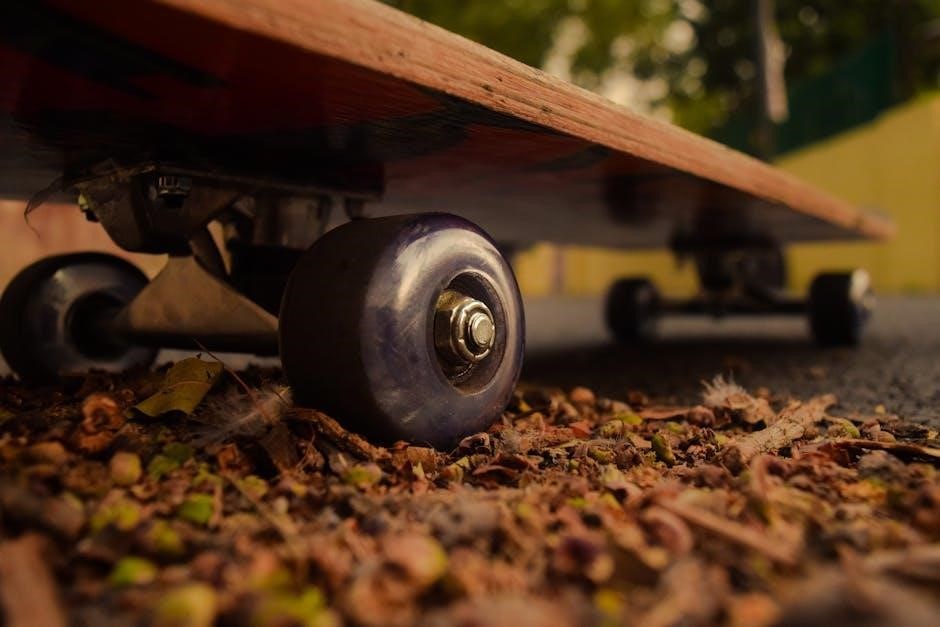
Maintenance and Upgrades
Regular cleaning and lubrication of your trucks ensure optimal performance․ Replacing worn bushings and tightening the kingpin can enhance stability and responsiveness for a smoother ride․
5․1 How to Clean and Maintain Your Trucks
Proper maintenance begins with cleaning your trucks regularly․ Use a soft cloth and mild detergent to wipe away dirt and grime․ Avoid harsh chemicals or abrasive materials that could damage the finish․ For the axle and kingpin, apply a small amount of silicone-based lubricant to keep them running smoothly․ Regularly inspect the bushings and replace them if they show signs of wear․ Tightening loose screws and bolts ensures your trucks stay secure and functional, providing a safer and more consistent skate experience․
5․2 Upgrading Bushings and Tightening the Kingpin
Upgrading your truck bushings can enhance performance by improving stability and responsiveness․ Choose bushings that match your riding style—softer for carving, harder for stability․ To install, remove the old bushings and kingpin, then press in the new ones․ Tightening the kingpin is crucial; overtightening can restrict turning, while undertightening may cause instability․ Use a skate tool to adjust gradually, testing the feel․ Properly tuned trucks ensure better control and a smoother skate experience․

Tips for Setting Up Your Trucks
Properly setting up your trucks ensures optimal performance․ Balance stability and maneuverability by adjusting tightness and alignment to match your skating style and deck width․
6․1 Pairing Trucks with Your Deck
Matching your trucks to your deck size is crucial for optimal performance․ For a smooth ride, ensure the truck width aligns with your deck’s width․ Narrower decks require slimmer trucks, while wider decks need broader trucks․ Proper pairing enhances stability, control, and maneuverability, allowing you to skate more efficiently․ Always measure your deck and choose trucks that closely match its width for the best results․

6․2 Adjusting Truck Tightness for Your Riding Style

Adjusting the tightness of your skateboard trucks tailors the board’s responsiveness to your skating style․ Looser trucks offer easier turning, ideal for cruising and carving, while tighter trucks provide stability and precision, perfect for technical tricks․ Experiment with the kingpin nut to find your preferred balance․ For beginners, a medium tightness is recommended, allowing for control without sacrificing maneuverability․ Fine-tuning this adjustment ensures a personalized feel, enhancing your overall skating experience․
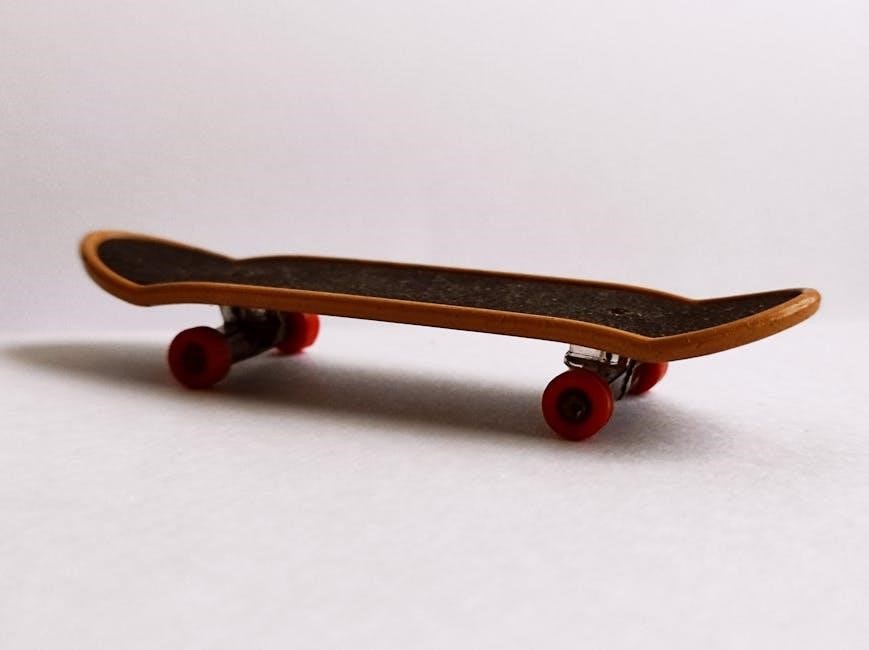
Frequently Asked Questions
Skateboarders often ask about truck size, replacement needs, and compatibility․ Regular and longboard trucks differ in kingpin angles, affecting stability and maneuverability․ Trucks can be used for both skating styles with adjustments․
7․1 What Is the Difference Between Regular and Longboard Trucks?
Regular skateboard trucks have a steeper kingpin angle (around 75 degrees), enabling sharp turns and quick response, ideal for street skating and tricks․ Longboard trucks feature a shallower angle (about 45 degrees), emphasizing stability and control at higher speeds, making them perfect for cruising and downhill racing․ The wider design and softer bushings of longboard trucks also provide better comfort and balance over long distances compared to regular trucks․
7․2 How Often Should I Replace My Trucks?
Replace your skateboard trucks every 2-3 years or when they show significant wear․ Look for signs like worn-out axles, stripped kingpins, or severely damaged hangers․ If your trucks no longer perform smoothly or respond to adjustments, it’s time for a replacement․ Regular maintenance can extend their lifespan, but excessive rust, bent axles, or loose components indicate they need to be swapped․ Always inspect your trucks after hard impacts or prolonged use to ensure safety and optimal performance․
7․3 Can I Use Skateboard Trucks for Longboarding?
While technically possible, using skateboard trucks for longboarding is not recommended․ Skateboard trucks have a steeper kingpin angle (around 75 degrees) compared to longboard trucks (about 45 degrees), affecting stability and turning radius․ Longboarding requires a wider, more stable setup for speed and control, which longboard-specific trucks provide․ Using skateboard trucks may compromise performance and safety, so it’s best to use trucks designed for your board type to ensure optimal fit and function․
